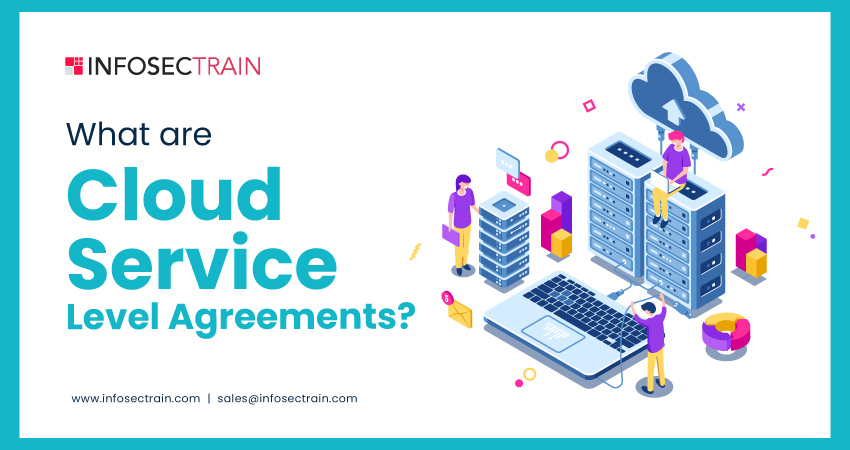What are Cloud Service Level Agreements?
In cloud computing, Cloud Service Level Agreements are the foundation of trust. For both customers and cloud service providers, they offer assurance, responsibility, and risk minimization. Understanding and negotiating useful SLAs becomes increasingly important as organizations adopt cloud technologies to embark on a pleasant and productive cloud journey. Cloud SLAs are contracts that support the dependability, performance, and security of the cloud services on which modern organizations rely. They are more than just legal documents.

Table of Contents
What are Cloud Service Level Agreements?
Types of Cloud Service Level Agreements
Elements of Cloud Service Level Agreements
Benefits of Cloud Service Level Agreements
What are Cloud Service Level Agreements?
A Cloud Service Level Agreement (CSL) is a binding contract between a cloud service provider (CSP) and its clients. It primarily explains the terms and conditions under which cloud services will be provided and the level of service that clients can expect. These contracts establish a groundwork for the relationship between the service provider and the client, promoting transparency and mutual comprehension.
Types of Cloud Service Level Agreements
1. Customer-based SLAs:
A customer-based SLA is a comprehensive agreement encompassing all services a customer utilizes. It details service specifics, outlines service availability provisions, defines responsibilities, delineates escalation procedures, and specifies cancellation terms. This agreement is actively crafted to meet individual customer objectives, requiring thorough negotiation for a tailored and positive cloud computing experience.
2. Service-based SLAs:
A service-level SLA is a contractual agreement outlining a uniform service for numerous customers. It ensures that all customers receive the same level of service, promoting consistency and clarity in the service delivery across multiple clients. This agreement serves as a standardized commitment, setting clear expectations for the service provided to each customer.
3. Multi-level SLAs:
This agreement is divided into various levels, consolidating several conditions within a unified system. It is well-suited for providers with diverse customers utilizing their products at varied price ranges or service levels. The incorporation of distinct service levels is integrated into a multi-level SLA, accommodating a broad customer base’s diverse needs and preferences.
Elements of Cloud Service Level Agreements
1. Agreement Overview:
The agreement overview outlines the SLA’s commencement and conclusion dates, identifies the involved parties, and summarizes the services. It presents key information, offering a clear snapshot of the SLA’s timeframe, participating entities, and the range of included services. This concise overview facilitates a quick understanding of essential aspects of the agreement.
2. Penalties:
This section explicitly outlines the financial or otherwise penalties incurred by either party for failing to meet their SLA obligations. It specifies the consequences, creating a transparent framework that holds both parties accountable for any breaches in meeting agreed-upon service levels. This ensures a clear understanding of the repercussions for non-compliance with SLA commitments.
3. Service level objectives (SLOs):
A service level objective (SLO) is a metric-specific agreement within an SLA, focusing on factors such as response time or uptime. Both parties commit to crucial service performance metrics supported by data, ensuring a clear understanding and measurable standards for the agreed-upon objectives. This enhances accountability and facilitates effective evaluation of service quality.
4. Signatures:
Authorized individuals and relevant stakeholders from both sides review and sign the agreement for each item in the document. As long as the agreement is active, it binds both parties, ensuring mutual commitment to its terms and conditions. This establishes a continuous obligation and accountability throughout the agreement.
5. Termination:
If there is a desire to terminate the agreement, both parties must provide a notice period, as specified in the SLA. The SLA delineates the conditions for termination or expiration, ensuring clarity on the circumstances warranting agreement. This approach enhances transparency and facilitates a smooth termination process when necessary.
Benefits of Cloud Service Level Agreements
1. Increased Customer Satisfaction:
SLAs are essential for coordinating service provider commitments with client needs and demands. By clearly defining service levels and standards, SLAs ensure that both parties have mutual knowledge of what to anticipate. As expectations are constantly met or exceeded, there are fewer misunderstandings, which promotes trust and eventually increases customer satisfaction.
2. Assured Service Quality:
SLAs function as contractual commitments that ensure the quality and reliability of cloud services. They establish specific benchmarks for performance and customer service, guaranteeing consistent satisfaction of expectations. This commitment to service excellence builds trust in the client-provider relationship, instilling a perception of reliability and dependability in the cloud service.
3. Minimized Downtime Risk:
SLAs encourage cloud service providers to uphold a high system uptime and dependability level by outlining strict service availability and performance requirements. The agreement serves as a preventative measure, requiring the provider to minimize disruptions and promptly address any problems that may develop. This decrease in the risk of downtime improves the cloud service’s overall dependability, which is advantageous to both clients and service providers.
4. Improved Budgeting and Planning:
SLAs describe the costs, performance indicators, and assurances of the cloud service, giving consumers a clear idea of what to expect regarding expenditure. This transparency enables more precise resource allocation and budgeting, lowering financial uncertainty and ensuring that cloud computing costs align with organizational goals and plans.
About InfosecTrain
InfosecTrain offers extensive certification training courses in cybersecurity, cloud computing, and cloud security, equipping you with the essential skills to elevate your grasp of cloud computing. These courses offer comprehensive insights into cloud computing architecture, design, safety, and related subjects. Our flexible, instructor-led training sessions, led by certified and experienced trainers, are tailored to accommodate individual requirements. Explore InfosecTrain to enhance your cloud computing expertise.






 1800-843-7890 (India)
1800-843-7890 (India)